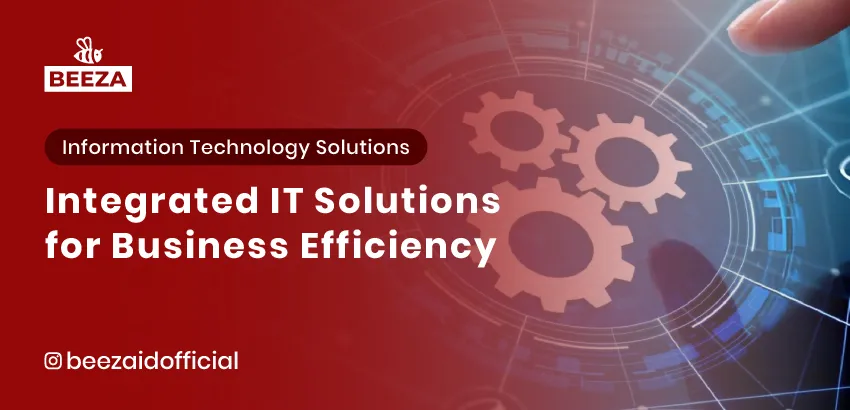
Introduction: Integrated IT Solutions for Business Efficiency
In today’s digital era, businesses face increasing challenges in managing data, communication, and operations efficiently. A lack of IT system integration often results in inefficiencies, data errors, and longer workflows.
By adopting integrated IT solutions, businesses can connect multiple systems, such as finance, HR, logistics, and customer service, ensuring seamless operations and improved productivity.
This article explores the benefits of integrated IT solutions and how their implementation can accelerate business growth.
Benefits of Integrated IT Solutions for Businesses
1. Enhanced Operational Efficiency
Integrated systems automate repetitive tasks, reduce human errors, and streamline workflows, improving overall productivity.
✅ Example: An Enterprise Resource Planning (ERP) system integrates finance, production, and inventory management, eliminating the need for manual data entry across different platforms.
2. Data-Driven Decision Making
IT integration enables real-time data access, empowering business leaders to make informed and strategic decisions.
✅ Example: Business analytics dashboards provide insights into financial performance, sales trends, and operational efficiency in one consolidated view.
3. Cost Reduction
An integrated IT system eliminates the need for multiple incompatible software tools, reducing licensing and maintenance costs.
✅ Example: Instead of using separate software for accounting, HR, and CRM, companies can adopt a unified system for all operations.
4. Strengthened Data Security
With a centralized IT system, businesses can enforce higher security standards, minimizing the risk of data breaches and cyberattacks.
✅ Example: Implementing Single Sign-On (SSO) ensures that employees can securely access different systems with one set of credentials.
5. Improved Team Collaboration
A connected IT environment enables employees across different departments to share information effortlessly, improving communication and teamwork.
✅ Example: Cloud-based platforms like Google Workspace and Microsoft 365 allow teams to collaborate in real time on documents and projects.
Key Technologies Supporting IT Integration
1. Cloud Computing
Cloud-based services enable businesses to store, access, and manage data remotely, reducing dependency on costly physical infrastructure.
2. API (Application Programming Interface)
APIs facilitate seamless communication between different software applications, ensuring smooth data exchange without manual intervention.
3. Internet of Things (IoT)
IoT connects physical devices to IT systems, enhancing automation and operational efficiency in industries such as manufacturing, logistics, and retail.
4. Artificial Intelligence (AI) & Machine Learning
AI-powered systems analyze business data, predict market trends, and automate processes like customer service and fraud detection.
5. Enterprise Resource Planning (ERP)
ERP software integrates various business functions—including finance, inventory, HR, and procurement—into a single, unified system.
Steps to Successfully Implement Integrated IT Solutions
✅ Assess Business Needs – Identify key areas that require IT integration for enhanced efficiency.
✅ Choose the Right Technology – Select IT solutions that align with your company’s scale and budget.
✅ Implement in Phases – Start with priority systems such as finance and customer service before expanding to other areas.
✅ Strengthen Data Security – Apply encryption, multi-factor authentication, and strict access policies to protect sensitive data.
✅ Regularly Monitor and Optimize – Continuously evaluate system performance and upgrade technology as needed.
Conclusion
Integrated IT solutions offer significant advantages to businesses, from boosting efficiency and reducing costs to enhancing security and collaboration. By implementing the right strategies, companies can leverage technology for growth and digital transformation.
Is your business ready to adopt integrated IT solutions? Contact us , for more solutions for your bussiness.🚀